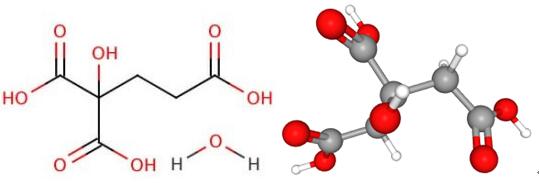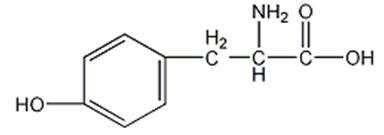Applications of Dimethyl disulfide
Nov 22,2019
Dimethyl disulfide(MDMS) appears as a colorless oily liquid with a garlic-like odor. Dimethyl disulfide is denser than water and slightly soluble in water,and vapors heavier than air. Dimethyl disulfide may irritate skin and eyes. Dimethyl disulfide is often used to make other chemicals capillary electrophoresis. Dimethyl disulfide is a volatile organic compound. Methyl disulfide is occasionally found as a volatile component of normal human breath and biofluids. Dimethyl disulfide is one of the representative volatile components found in oral malodor. Dimethyl disulfide concentrations in breath is a practical noninvasive way to assess recent exposure to sulfur compounds in sulfate pulp mills, and therefore Dimethyl disulfide should be applicable to workplaces contaminated.

Fig 1. Chemical structure formula and three-dimensional structure of Dimethyl disulfide
Dimethyl disulfide (DMDS) is a new pre-plant soil fumigant being developed by Arkema on a worldwide basis for the treatment of nematodes, weeds, and soil-borne plant pathogens. DMDS is a ubiquitous natural product, common in the global sulfur cycle, and is detected as a metabolite in numerous biological processes. DMDS is not only malodorous but also very toxic for all organisms. It exerts a complex mode of action through mitochondria dysfunction and activation of ATP-sensitive potassium channels and greatly inhibits the cytochrome oxidase[1].
Dimethyl disulfide is a widespread natural odoriferous compound emitted from many sources such as bacteria, fungi, plants and animals. It is an oxidation product of methanthiol in air. Along with dimethyl sulfide and dimethyl trisulfide it has been confirmed as volatile compounds given off by the fly-attracting plant known as dead-horse arum (Helicodiceros muscivorus). These flies are attracted to the odor of fetid meat, they help pollinate this plant[2].
Dimethyl disulfide is an oxidant, and glutathione reduces its oxidative potential to erythrocytes. However, when the quantity of dimethyl disulfide exceeds the body's glutathione reserves, erythrocytes are oxidized to form Heinz bodies, resulting in hemolysis and Heinz-body anemia[3]. Dimethyl disulfide delivered over longer time periods allows induction of more glutathione for the hepatic degradation of dimethyl disulfide. Dimethyl Disulfide is a sulfiding agent, which is used along with a reducing agent such as hydrogen, to transform metal oxide species to a metallic sulfide crystalline phase in situ for hydrotreating catalysts. For in situ sulfiding, the reaction is performed inside the process unit for complete control and to achieve maximum catalyst activity and safe handling. Dimethyl Disulfide can also be used as a passivation agent to reduce the layer of coke that forms within furnaces and improve the run length, yield and life of furnaces.
Dimethyl Disulfide is available in bulk (railcars, tank trucks and ISO containers) or packaged containers including 250 gallon returnable steel totes, 57 gallon returnable steel cylinders or 54 gallon drums.
The important reactions of Dimethyl Disulfide include chlorination giving methanesulfenyl chloride (CH3SCl), methanesulfinyl chloride (CH3S(O)Cl),[5] and methanesulfonyl chloride (CH3SO2Cl) as well as oxidation with hydrogen peroxide or peracetic acid giving the thiosulfinate methyl methanethiosulfinate (CH3S(O)SCH3)[4].
References
[1] Ajwa H , Ntow W J , Qin R , et al. Chapter 9–Properties of Soil Fumigants and Their Fate in the Environment[J]. Hayes Handbook of Pesticide Toxicology, 2010, 61(717):315-330.
[2] Marcus C. Stensmyr; Isabella Urru; Ignazio Collu; Malin Celander; Bill S. Hansson; Anna-Maria Angioy (2002). "Rotting smell of dead-horse arum florets". Nature. 420 (6916): 625–626.
[3] Konnie H. Plumlee DVM, MS, Dipl ABVT, ACVIM, ... Patricia A. Talcott, in Clinical Veterinary Toxicology, 2004.
[4] Block, Eric; O'Connor, John (1974). "Chemistry of alkyl thiosulfinate esters. VI. Preparation and spectral studies". Journal of the American Chemical Society. 96 (12): 3921.
- Related articles
- Related Qustion
- Is dimethyl disulfide a natural product? May 22, 2024
Dimethyl disulfide (DMDS) is a new pre-plant soil fumigant developed by Arkema worldwide for treating nematodes, weeds, and soil-borne plant pathogens.
- Dimethyl disulfide: Toxicity, Applications, storage, Preparation Apr 24, 2023
Dimethyl disulfide (DMDS) is a colorless to pale yellow liquid with a strong, unpleasant odor. It is an organic compound composed of two methyl groups and two sulfur atoms.
Citric acid monohydrate is a weak organic acid commonly used in the food, cosmetic and pharmaceutical industry. The parent base of Citric acid monohydrate, citrate, is a component of the Krebs cycle.....
Nov 22,2019Organic Raw MaterialL-Tyrosine(LT) is given as a supplement to increase L-Tyrosine levels in people with PKU.L-tyrosine is an important amino acid that is widely applied in the food, feed, medicines, chemical and cosmetics industries.....
Nov 22,2019Amino Acids and ProteinsDimethyl disulfide
624-92-0You may like
Dimethyl disulfide manufacturers
- DimethylDisulfide(DMDS)
-

- $1.00/ KG TON ETC
- 2025-12-03
- CAS:624-92-0
- Min. Order: 200KG TON ETC
- Purity: 99
- Supply Ability: 20 tons
- Dimethyl disulfide
-

- $10.00 / 1KG
- 2025-12-03
- CAS:624-92-0
- Min. Order: 1KG
- Purity: 99%
- Supply Ability: 100 mt
- Dimethyl Disulfide
-

- $0.00 / 200Kg/Drum
- 2025-10-14
- CAS:624-92-0
- Min. Order: 1KG
- Purity: >99.5%
- Supply Ability: 10000tons






